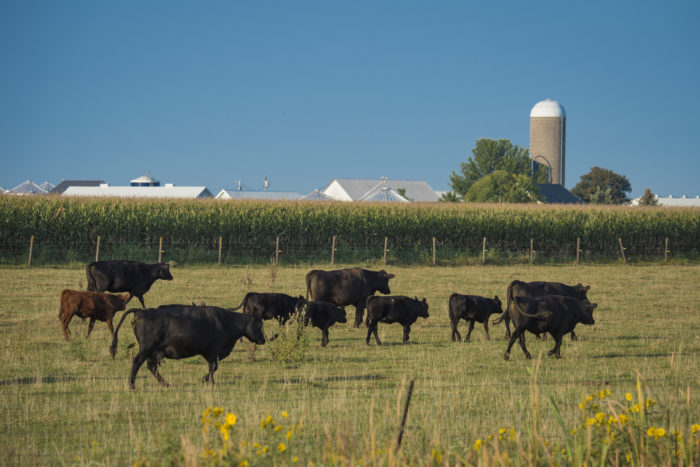$22 Million Announced for Grazing Lands Conservation Initiative
$22 Million Announced for Grazing Lands Conservation Initiative National Sustainable Agriculture Coalition


$22 Million Announced for Grazing Lands Conservation Initiative

The USDA Natural Resources Conservation Service (NRCS) has issued a call for applications for the Grazing Lands Conservation Initiative (GLCI), which has received funding of approximately $22 million for new cooperative agreements. The GLCI aims to expand access to conservation technical assistance for livestock producers and promote the use of conservation practices on grazing lands. This funding opportunity aligns with the Sustainable Development Goals (SDGs), particularly Goal 15: Life on Land, by supporting sustainable agricultural practices and protecting ecosystems.
Importance of Managed Grazing
- Managed grazing plays a crucial role in improving the profitability of farm and ranch operations across the nation.
- Grass-based agriculture provides opportunities for new farmers and ranchers to enter the livestock management sector with lower upfront capital requirements.
- Well-managed livestock grazing helps farmers and ranchers thrive and contribute to their rural communities.
- Effectively managed grasslands protect water quality, enhance soil health, and provide habitats for pollinators and wildlife.
- Operations that maintain ground cover year-round contribute to water retention and reduce the impacts of flooding.
Funding Details
- The GLCI funding is divided into two categories:
- Category 1: $8 million allocated for agreements ranging from $150,000 to $300,000, lasting one to two years.
- Category 2: $14 million allocated for agreements ranging from $350,000 to $1,000,000, lasting three to four years.
If you have any questions, please contact Tessa Garcia, Grants Management Specialist, at tessa.garcia@usda.gov.
Informational Webinar
The Wallace Center will be hosting an informational webinar on April 11, 2024, at 03:00 PM Central Time (US and Canada). The webinar will cover the GLCI Notice of Funding Opportunity (NFO), provide insights on crafting proposals, and share success stories from current grantees. Speakers will be announced. The webinar is co-sponsored by the Michael Fields Agricultural Institute.
Join the webinar here.
SDGs, Targets, and Indicators
1. Which SDGs are addressed or connected to the issues highlighted in the article?
- SDG 2: Zero Hunger
- SDG 6: Clean Water and Sanitation
- SDG 12: Responsible Consumption and Production
- SDG 15: Life on Land
The article discusses the importance of managed grazing in improving profitability for livestock producers, protecting water quality, improving soil health, and providing habitats for pollinators and wildlife. These issues align with the goals of SDG 2 (Zero Hunger) by promoting sustainable agriculture practices, SDG 6 (Clean Water and Sanitation) by protecting water quality, SDG 12 (Responsible Consumption and Production) by promoting sustainable land use, and SDG 15 (Life on Land) by preserving ecosystems and biodiversity.
2. What specific targets under those SDGs can be identified based on the article’s content?
- Target 2.4: By 2030, ensure sustainable food production systems and implement resilient agricultural practices that increase productivity and production.
- Target 6.3: By 2030, improve water quality by reducing pollution, eliminating dumping, and minimizing release of hazardous chemicals and materials.
- Target 12.4: By 2020, achieve the environmentally sound management of chemicals and all wastes throughout their life cycle, in accordance with agreed international frameworks, and significantly reduce their release to air, water, and soil to minimize their adverse impacts on human health and the environment.
- Target 15.1: By 2020, ensure the conservation, restoration, and sustainable use of terrestrial and inland freshwater ecosystems and their services, in particular forests, wetlands, mountains, and drylands, in line with obligations under international agreements.
The targets identified are directly related to the issues discussed in the article. They emphasize the need for sustainable food production systems, improved water quality, responsible waste management, and the conservation and restoration of terrestrial ecosystems.
3. Are there any indicators mentioned or implied in the article that can be used to measure progress towards the identified targets?
- Indicator 2.4.1: Proportion of agricultural area under productive and sustainable agriculture.
- Indicator 6.3.2: Proportion of bodies of water with good ambient water quality.
- Indicator 12.4.1: Number of parties to international multilateral environmental agreements on hazardous waste, including their compliance with the agreements.
- Indicator 15.1.1: Forest area as a proportion of total land area.
The article does not explicitly mention these indicators, but they can be used to measure progress towards the identified targets. These indicators provide specific metrics for assessing the proportion of agricultural land under sustainable practices, water quality in bodies of water, compliance with international agreements on hazardous waste, and forest area as a proportion of total land area.
SDGs, Targets, and Indicators
| SDGs | Targets | Indicators |
|---|---|---|
| SDG 2: Zero Hunger | Target 2.4: By 2030, ensure sustainable food production systems and implement resilient agricultural practices that increase productivity and production. | Indicator 2.4.1: Proportion of agricultural area under productive and sustainable agriculture. |
| SDG 6: Clean Water and Sanitation | Target 6.3: By 2030, improve water quality by reducing pollution, eliminating dumping, and minimizing release of hazardous chemicals and materials. | Indicator 6.3.2: Proportion of bodies of water with good ambient water quality. |
| SDG 12: Responsible Consumption and Production | Target 12.4: By 2020, achieve the environmentally sound management of chemicals and all wastes throughout their life cycle, in accordance with agreed international frameworks, and significantly reduce their release to air, water, and soil to minimize their adverse impacts on human health and the environment. | Indicator 12.4.1: Number of parties to international multilateral environmental agreements on hazardous waste, including their compliance with the agreements. |
| SDG 15: Life on Land | Target 15.1: By 2020, ensure the conservation, restoration, and sustainable use of terrestrial and inland freshwater ecosystems and their services, in particular forests, wetlands, mountains, and drylands, in line with obligations under international agreements. | Indicator 15.1.1: Forest area as a proportion of total land area. |
Behold! This splendid article springs forth from the wellspring of knowledge, shaped by a wondrous proprietary AI technology that delved into a vast ocean of data, illuminating the path towards the Sustainable Development Goals. Remember that all rights are reserved by SDG Investors LLC, empowering us to champion progress together.
Source: sustainableagriculture.net

Join us, as fellow seekers of change, on a transformative journey at https://sdgtalks.ai/welcome, where you can become a member and actively contribute to shaping a brighter future.







